Recent Fire Damage Posts
5 Things To Teach Your Kids About Fire Safety
4/1/2024 (Permalink)
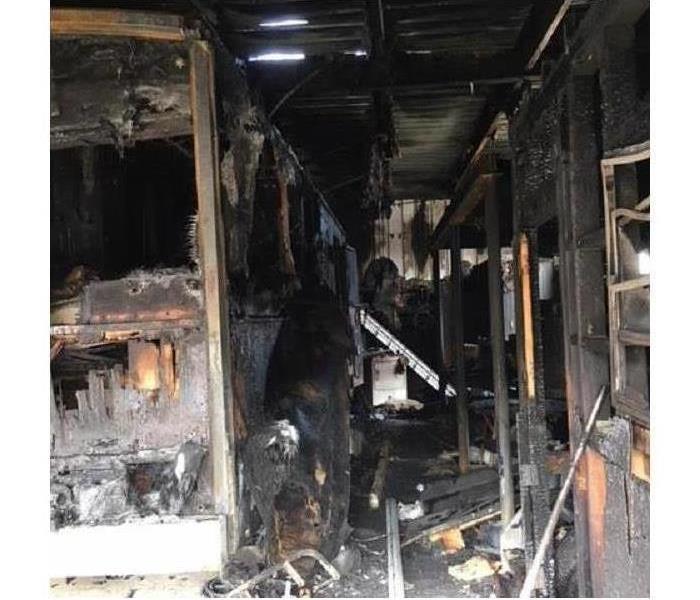 Fire damaged storage in Salt Lake City, UT.
Fire damaged storage in Salt Lake City, UT.
Teaching kids safety is an important factor when making an emergency fire plan for your Salt Lake City, UT, home. One way you can help protect them is by instructing them what to do if a fire does occur. Many firemen and fire damage restoration professionals agree that learning the following tips can help.
5 Lessons About Fire Safety
1.What Fire Hazards Are
One step toward preventing a home fire is to tell your children what a fire hazard is. This way they will know what items not to play with, and to tell you immediately if they see something amiss.
2. How To Stay Low
During a fire smoke and heat rise, meaning the cooler air is closer to the floor. Teaching your child to stay low can help them avoid the smoke and find fresher air.
3. How To Check a Door
One important step for kids safety during a fire is to know how to check a door before opening it. They should know to use the back of their hand to test the door’s surface for heat, and to open it only if it doesn’t seem hot.
4. What Safe Routes Are
Safe exit routes are an important part of a fire escape plan. Explain to your child where the closest exits are and how to use them safely.
5. Where to Meet Up
Instruct your child to go to a pre-selected location to meet up with you once they’re safely out of the house. This should be an easily identifiable location such as a neighbor’s porch or a fire hydrant.
In the event of a fire, kids' safety is important, and by teaching your child these things, you can feel more secure knowing they understand what to do in a fire. Telling them what a fire hazard is can help prevent a fire before it starts. They should also learn to stay low, check doors before they enter a room, follow safe routes out of the house, and where to meet up with everyone else.
Steps of the Fire Restoration Process
7/14/2022 (Permalink)
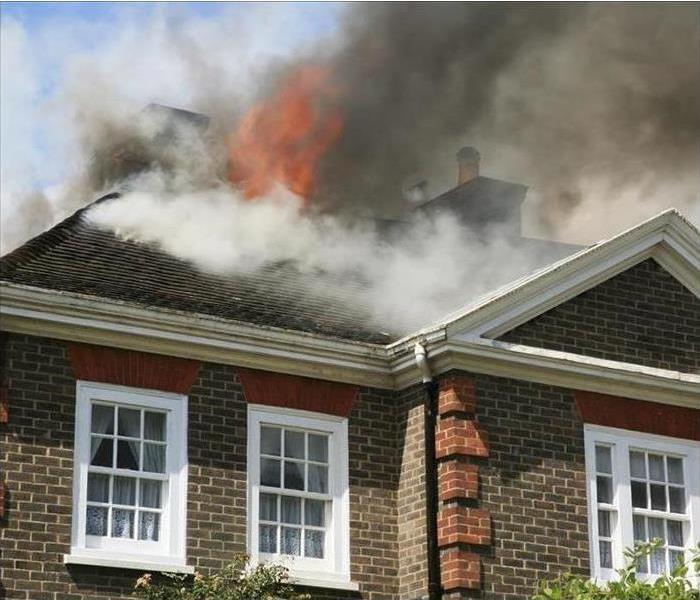 This house is on fire. Even a small number of flames can cause a significant amount of fire damage.
This house is on fire. Even a small number of flames can cause a significant amount of fire damage.
Even a small number of flames can cause a significant amount of fire damage. Here is what the process looks like when technicians from a fire restoration company in Salt Lake City, UT, arrive at your home.
5 Steps Of The Fire Restoration Process
- Assessment
The first thing specialists have to do is analyze the problem. There are several components to this assessment:
- Noting the extent of the destruction
- Identifying the areas with water damage
- Detailing the processes needed to restore the structure
- Extraction
A fire hose expels a lot of water in a short amount of time. This is great for getting rid of the flames, but the water needs to be extracted from your home quickly to minimize the damage it can cause. Technicians pump out standing water and debris and extract excess moisture from surfaces.
- Removal
All affected items and materials are removed from your home during fire damage mitigation. Saturated dry wall is torn out and damp or smoky insulation is discarded. Flooring and ceiling materials must go, too. All damaged belongings must be inspected to determine whether or not they are salvageable.
- Cleaning
There are three steps to the cleaning stage. The first is the removal of smoke and soot particles from every surface, crack and crevice. The second is the disinfection of everything the water used to put out the fire touches to rid your home of bacteria or fungus that may have started to grow in the moisture. The third step involves purifying the air to rid your home of unpleasant odors.
- Restoration
Once the remaining structure is cleaned, it's time to rebuild. Technicians put up new walls and match the paint or wallpaper to what was already there. All new flooring may be in order if your carpets or tiles aren't able to be patched.
Restoring your home after a fire involves multiple steps. After the water and fire damage are repaired, the structure can then be rebuilt.
Smoke Alarms and Your Family's Fire Safety Plan
6/22/2022 (Permalink)
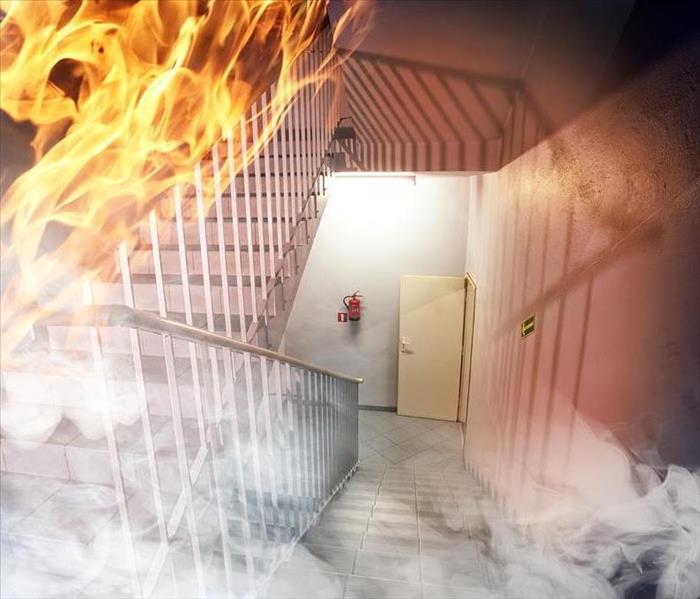 You can Avoid important Fire Damage by Following our Tips.
You can Avoid important Fire Damage by Following our Tips.
According to the U.S. Consumer Product Safety Commission, smoke and gases put homeowners in danger faster than flames during residential fires, and the majority of these dangerous fires happen when victims are sleeping.
A smoke alarm provides vital additional moments for escape, but to enjoy the benefits of safety devices, they must be placed and maintained appropriately:
- According to manufacturer instructions
- Inside each bedroom
- On each floor of the home
- Outside bedrooms
- In rooms where fire risk is higher
Unfortunately, many homes in Salt Lake City, UT, and surrounding communities don’t have working alarms or enough detectors. Take a few moments to determine the best smoke detector plan for your home.
Answers to Common Questions About Your Smoke Alarm and Fire Safety Plan
Which type of device is best?
There are several options available today, including ionization, photoelectric, and combination. Ionization alarms are best at detecting fires that burst into flames rapidly while photoelectric devices track smoldering, smoky fires best.
Most experts recommend using both types or combination detectors in your home. Test your alarms once a month and replace batteries at least once a year. Most devices should be replaced after 10 years; some need to be switched out more often.
What are smart smoke detectors?
These devices come in both ionization and photoelectric types, and they work in the same way that traditional alarms work. However, smart devices also send an alert to your smartphone, connect several smart detectors, and may work with other smart features throughout your home. This improves your chances of responding quickly to a fire.
What are the most important features of fire alarms?
In addition to making sure you have both types of detectors, make sure you have a reliable source of power for each alarm. Battery-powered devices are a good option in older homes, but new construction provides a chance for connected systems that run on your home’s electricity with a battery backup. Hard-wired systems that are interconnected provide more escape time. Some alarms have voice features that may be more effective at waking children when detectors sound.
What should our fire safety plan include?
Create a fire escape plan with multiple escape routes (preferably two for each room) and practice these routes with your family often. Make sure your family members know where to meet after evacuating your home. Make sure that you practice your escape from every room in the home and practice during the day and night. In the best-case scenario, your children will respond automatically to leave the home immediately when an alarm sounds.
What about putting out fires?
Naturally, the best answer is prevention. Talk to your fire department about the steps you can take to reduce the risk in your home. Use this opportunity to become familiar with fire extinguishers and how to use them. Your quick action could prevent a small fire from spreading.
Your most important action during a residential fire is making sure that you and your family are safe once the smoke alarm sounds. Once you leave the home, don’t return for any reason. Any damage that occurs to the home can be repaired by home restoration professionals but treating the physical and emotional harm to family members is harder.
What To Expect During Restoration After a House Fire
3/14/2022 (Permalink)
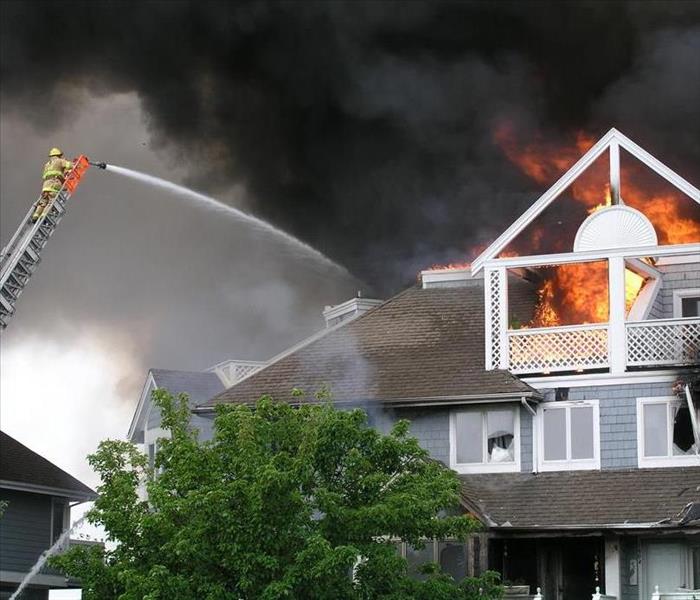 Learn More about Restoration After a House Fire, by Following These Tips.
Learn More about Restoration After a House Fire, by Following These Tips.
Even if the flames get extinguished before a total loss, a fire in your Salt Lake City, UT home still means dealing with the aftermath. After ensuring everyone’s safety and filing a claim, the next step is contacting a professional fire restoration company. Along with expertise with soot and smoke damage, a professional will also be able to properly correct any water damage sustained while the fire was being put out. Once the experts arrive, you can expect the following five steps to happen as they get your home back to once it what was.
Important Tips to Consider about Restoration After a House Fire
1. Damage Assessment
Before any work begins, an assessment of the damage needs to happen. First, it means ensuring the property is safe to enter. After that, the experts will inspect the property to determine the height of the flames, amount of water intrusion, contents affected and more. They will identify items that must be tossed, as well as possessions that will be able to be packed up to be taken to a secure site for deep cleaning and restoration.
This step provides the homeowner and insurer a solid understanding of how much work will be required, how long it will take and the estimated cost.
2. Property Securement
A key element of fire restoration is ensuring the property is secure. The last thing homeowners want is extra damage to an already damaged home. Work will be completed to board up openings and seal the roof to keep unexpected weather and intruders out. In some cases, a temporary fence will be installed. This step also involves removing perimeter debris and sealing off unaffected areas to reduce the potential of the damage spreading.
3. Dry Out
When it comes to damage cleaning, getting the home dry is critical. While that may seem strange when dealing with a fire, it’s likely a significant amount of water was needed to extinguish the flames. Water removal is essential to keeping mold and other secondary damage at bay. Professionals use industrial equipment to speed up this process, as well as have the knowledge and know-how to remove and water-logged materials prone to spreading the damage, such as drywall.
4. Cleanup
Before the home can be returned to its original state, deep cleaning must happen. The most intensive step of the process, it involves removing smoke and soot damage from all surfaces, inside and outside. Oftentimes, this will include cleaning the ducts to ensure that no lingering odors or damage is left behind. After cleaning, the home will be thoroughly deodorized and treated to eradicate mold growth.
5. Restoration
During this last step, repairs will be made to damaged areas. Depending on the extent of the damage, it may mean replacing or rebuilding the roof, walls, floors, cabinets and more. While it may seem overwhelming, it is a necessary task to ensure that the home is back to like new.
Dealing with a fire is never anything anyone wants to deal with. While fire restoration may not be a fast process, getting the right help means restoring your home to its preloss condition faster and more efficiently.
Fire Alarm Basics You Need To Know
2/23/2022 (Permalink)
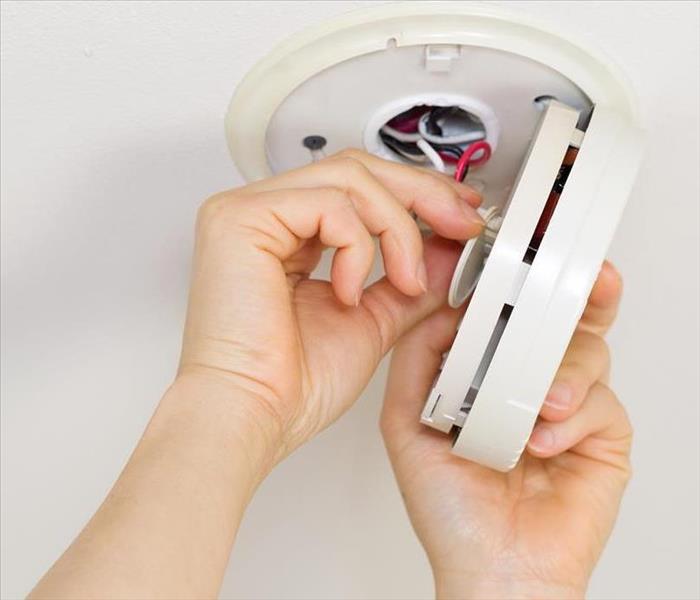 Learn More about Fire Alarms by following These Tips and prevent Fire Damage in your Park City, UT Home.
Learn More about Fire Alarms by following These Tips and prevent Fire Damage in your Park City, UT Home.
The fire alarm is one of the most effective ways to keep your home and family safe from a fire. The more you know about this convenient, affordable tool, the better you can use them in your home. Home fires can be some of the most frightening experiences that impact your home and maintaining a proper prevention and detection system is a vital element of keeping your family safe.
Five Useful Facts and Tips About the Fire Alarm
Which alarms are best? How many should you have in your home? What type of maintenance do alarms require? Installing and maintaining an effective alarm system doesn't have to be difficult, but it does call for some basic information.
1. Smoke alarms have different purposes.
Whether you refer to them as fire or smoke alarms or detectors, it's important to understand the different types and purposes of the alarms. A photoelectric alarm is more likely to recognize a smoldering fire as smoke particles disrupt an internal light sensor. Ionization alarms quickly respond to high flames.
The National Fire Protection Association recommends using both types of alarms in your home or a combination alarm that contains both technologies.
2. You probably need more alarms in your home.
You should have a detector inside each bedroom and in the hallway outside of the bedrooms. You also need a detector on every floor of your home. Consider hanging one in the kitchen, the garage, and other areas of the home where combustible materials are used and stored.
3. Smoke detectors require maintenance and inspections.
You may have already responded to that piercing chirping of an alarm with dying batteries. In addition to the once or twice-yearly battery replacement, you should test each alarm once a month or more often. Look for the test button on your alarm and hold it for a few seconds. You should hear a very loud beep. If you can't hear it or if the alarm is quiet, it's time to replace the batteries.
4. Don't paint the alarm and keep it free from other obstructions.
While you're testing, watch out for dust and buildup on or around the alarm. Paint, dirt, and grease buildup can prevent airflow around the alarm and stop it from detecting flames and smoke.
5. You should invest in interconnected alarms.
Reach out to professionals for an interconnected fire alarm system. If a fire breaks out in one part of the home, you want your entire family to receive the alarm. It only takes a few minutes for fire to spread throughout your home, so every second of advance warning you have gives you a better chance of safely evacuating. When professionals install your system, you can be confident that alarms are connected correctly and in proper working order.
When fire does affect your Park City, UT, home, there's a lot of potential for water and smoke damage, as well as secondary issues. Learn more about the steps you can take to avoid fire damage by reaching out to your insurance company, the local fire department, and fire mitigation and cleanup professionals.
The Steps of the Fire Restoration Process
1/7/2022 (Permalink)
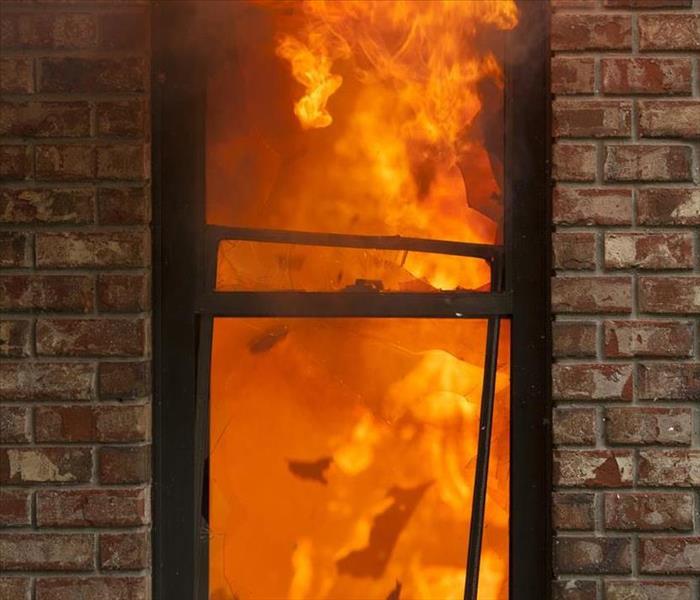 Check these important Steps to Restore your Salt Lake City, UT house after a Fire.
Check these important Steps to Restore your Salt Lake City, UT house after a Fire.
A fire in your home in Salt Lake City, UT, can cause a lot of damage. Additionally, while the water used to put out the fire may save the structure, it can also saturate and ruin porous materials. The fire restoration process involves not only mitigating all this damage but also rebuilding your home so that it looks like it did before the fire. There are several steps in this process.
Follow these Steps to Restore your house after a Fire.
1. Assessment
The first thing that fire damage remediation specialists do when they arrive is to survey the damage to your home. This assessment reveals several factors that must be addressed in the mitigation process:
- Extent of the water and smoke damage
- Areas vulnerable to egress
- Equipment needed to resolve issues
Once they have this information, the technicians can formulate a plan for remediation and repair. They may also be able to give you a general estimate of the cost at this point.
2. Security
A fire typically causes windows to break and makes holes in the external structure of your building. Before work begins, the mitigation team boards up vulnerable spots to keep invaders such as animals, vandals and thieves out of your home.
3. Extraction
Standing water and damp materials can make any existing damage worse the longer they remain in your home. Therefore, technicians use industrial pumps to quickly extract water out of the way to minimize secondary issues.
4. Removal
The next step in the fire restoration process is the removal of any materials that are damaged beyond repair. Technicians tear out saturated drywall and insulation. They may also remove carpet, tile and ceiling materials. They also take furniture and other belongings out of the affected area so that they can be cleaned or discarded.
5. Cleaning
Damage cleaning is necessary for the removal of any dirt, soot or bacteria on the remaining surfaces. The space is likely contaminated and thus must go through a disinfection process. This gives the team a clean slate to work with before rebuilding begins.
6. Drying
Before adding new materials to the structure, the mitigation team wants to ensure that the space is dry. This prevents further damage such as mold growth. All surfaces are dried, and the humidity level in the space must be an acceptable level before they can proceed.
7. Restoration
The final stage is rebuilding the structure of your home and making it livable again. The restoration team adds new insulation and replaces the walls, ceilings and floors that were taken out. Then they make sure that the new parts match the remaining structure to provide a seamless view. When the whole project is finished, you shouldn't be able to tell where the damage happened.
A lot of damage can occur when fire ravages your home. The fire restoration process includes not only dealing with the effects of the actual fire but also removing water and drying out the area so that no further problems occur. Understanding everything that goes on during cleanup is important so that you have a realistic timeline for when your home is ready for your family again.
How Is Content Cleaning Done After a Fire?
10/14/2021 (Permalink)
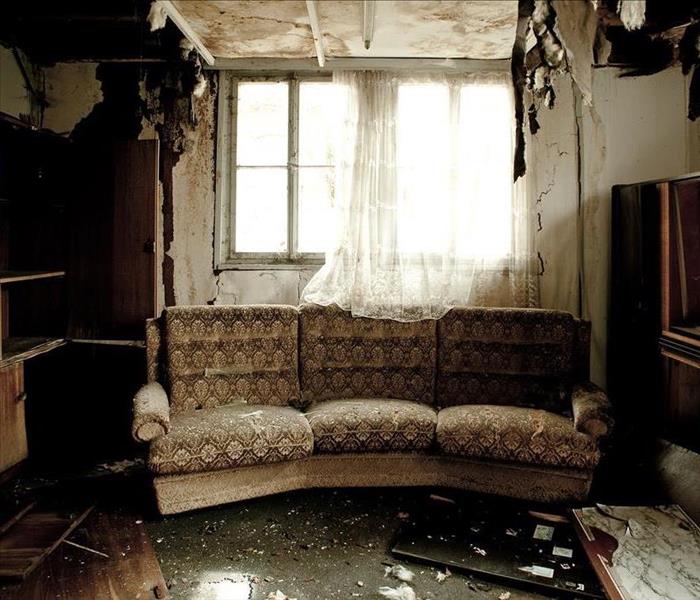 After a fire in your Salt Lake City, UT home, some damaged items can be restored.
After a fire in your Salt Lake City, UT home, some damaged items can be restored.
Whenever a fire occurs in a home there is damage from the heat and flames, smoke and soot, and the water or chemicals used to put out the fire. Some contents may be destroyed; however, some contents can be restored by using one or more cleaning methods, such as dry-cleaning.
5 Content Cleaning Steps for Fire Damaged Items
Restoring fire-damaged contents can be a difficult process. Smoke and soot stains and odors can linger for years if the correct cleaning techniques are not employed. For many homeowners, it is a good idea to contact a fire restoration company in Salt Lake City, UT, to clean fire-damaged contents. Most restoration companies employ a five-step cleaning process.
1. Take Precautions for Safety
Entering a fire-damaged structure can be dangerous. Restoration professionals take steps to make sure anyone entering the structure during cleanup is safe. To protect workers against smoke and soot particles in the air, respirators are worn. Gloves and other protective clothing protect against contact with soot on surfaces. Workers ensure that there is enough ventilation to keep working conditions safe.
2. Assess the Damage
Next, restoration professionals examine the damaged contents and decide which can be cleaned, which should be placed in content storage and which should be thrown out. They consider the value of the property when making this determination. It is important that this step be completed quickly because the longer soot remains on items, the more damage it can cause. Many items that have not suffered direct damage from fire or heat can be salvaged. Textiles, such as bedding and draperies, can usually be restored by dry-cleaning. Open food items are thrown away. Unopened food may be safe, but if there is any question it should be discarded. Plastic that is melted or discolored can be cleaned, but not restored.
3. Take an Inventory
If anything needs to be cleaned off-site, the restoration company will record which items are removed, where the items are stored, and what condition the items were in when taken out. For insurance purposes, an inventory is also made of any items that are discarded.
4. Perform Content Cleaning
The restoration company will then determine which cleaning method is best for each item and begin the cleaning process. Dry or wet cleaning is usually done for items with light residues. Spray and wipe methods are used for items that can not be wet cleaned without damage. Foam cleaning is often used for upholstery fabrics that may shrink or discolor if wet cleaned. Abrasive cleaning is only done on items that can withstand surface agitation. Immersion cleaning involves dipping items into the cleaning product.
5. Remove Odors
Finally, after cleaning is complete, the restoration company will remove smoke odors. Smoke odor removal may be done by ozone or hydroxyl deodorizing.
Whether you have lightly damaged items that need dry-cleaning or heavily damaged contents that require other techniques, a restoration company can salvage many items damaged by smoke or soot. However, it is important to act quickly before contents become damaged beyond repair.
How To Prepare a Home Escape Plan?
8/19/2021 (Permalink)
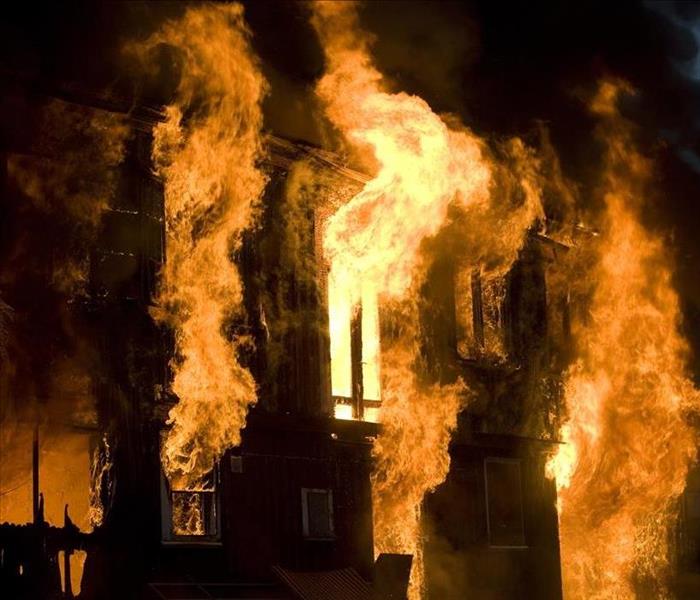 An escape plan can save your family's life and yours from a house fire in Salt Lake City, UT.
An escape plan can save your family's life and yours from a house fire in Salt Lake City, UT.
No one wants to think a house fire can happen to them, but the reality is that over 350,000 house fires occur in the United States every year. Having a fire escape plan in place can help ensure that your family stays safe if this happens to you.
Make Sure Everyone Is Included in Your Plan
Include all members of your household in your emergency escape plan. Pay particular attention to household members who may have special needs:
- Young children
- Elderly family members
- People with disabilities
- Guests
- Pets
Children and family members with a hearing impairment may not wake when a fire alarm goes off. Assign an adult family member to alert them. If you have family members with mobility issues or disabilities that may impair their ability to execute an escape plan, assign someone to assist them. Keep pet essentials, such as leashes or cat carriers, stored along your escape route. Assign a family member to look for your pet and attempt to evacuate it. If you can not get your pet out, leave the door open and call for it. Make sure your guests are familiar with your escape plan.
Plan Two Escape Routes
Smoke or flames may make your primary escape route impassable, so your fire escape plan should include two ways out of every room. The primary exit from most rooms is the door. The most common secondary exit is a window. Make sure both exits open easily and that any security devices have an emergency release.
Pick a Meeting Spot
Decide on a location outside your home where your family members will gather so that you can make sure everyone made it out. The location should be in front of the house so that emergency responders can see you. Common choices include a neighbor's house, mailbox, or street sign. Instruct your family members that no one is to go back into the house once they have escaped.
Make Sure Your Smoke Alarms Work
Periodically test your smoke alarms to make sure they work. You should install a smoke alarm in every sleeping room, outside each sleeping room, and on every level of your home.
Stress Quick Response Times
Make sure your family knows that if the fire alarm goes off they must immediately exit the house. Practice your plan at least once every year to make sure everyone can execute it quickly and correctly.
Create a Backup Plan
If one or more family members can not exit through either of the planned escape routes, instruct them to close all doors between themselves and the fire. They should also put a towel under the door and then go to an exterior facing window and call the fire department to report their location.
Plan for After the Fire
Once everyone is safe, have a plan for beginning the restoration process. Call your insurance company to file a claim. You may need a fire restoration company in Salt Lake City, UT, to assist with cleanup.
The most important thing to do if a fire happens is make sure everyone gets out safely. Having a fire escape plan in place will increase your chances of avoiding injury or loss of life.
How to Make a Home Fire Escape Plan
8/4/2021 (Permalink)
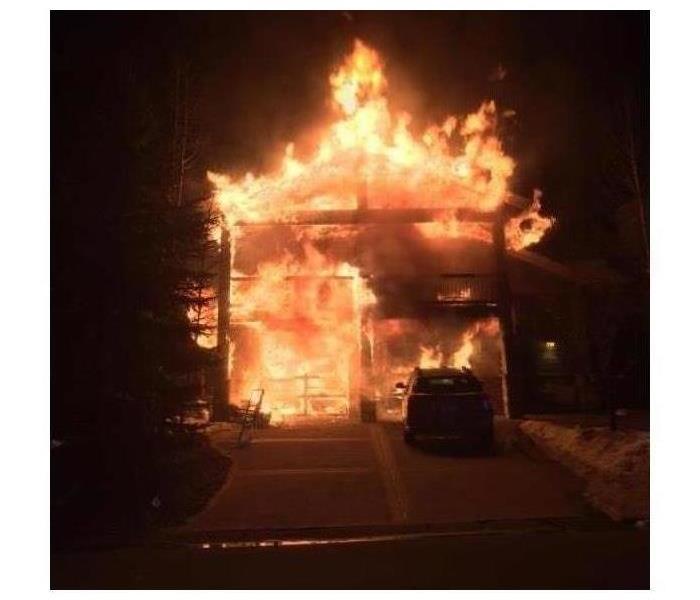 A house on fire is dangerous and a traumatic experience.
A house on fire is dangerous and a traumatic experience.
No one in Salt Lake City, UT, wants to experience the devastation of a house fire, but in order to keep your family safe, you need to put a plan in place should once occur. Experts recommend working with your family to create a fire escape plan and practicing it at least twice a year so that everyone knows what to do.
Here are some ideas for what your plan should include.
1. How to Get of the Rooms.
Every household member should know at least two ways to escape each room in the home. If the fire prevents someone from leaving through the door, is there a window to crawl out of? Teach children how to open windows.
2. How and Where to Find Fire Escape Ladders.
If you have a two-story home, ladders can help people escape through top-floor windows. These are best used by adults and older children. Make sure everyone knows how to use them.
3. Where to Meet.
As part of your emergency escape plan, pick a meeting spot a safe distance away from the home. Everyone should know where it is. It is very important that children understand that everyone will meet at this safe meeting place and that they don’t need to try to rescue anyone on their way out of the home.
After your fire escape plan is established, your family should practice putting it into place. Practice until it can be completed in less than two minutes. In addition, your household can practice low crawling and waking up to a smoke alarm. Teach everyone how to dial 9-1-1 and stop, drop and roll.
The thought of experiencing a house fire is a scary one, but it’s better to come up with a fire escape plan in case of an emergency than it is to ignore the issue. Having a plan in place will help keep you and your loved ones safe.
For more information, please visit us at http://www.SERVPROnesaltlakecityparkcity.com.
Important Smoke Alarm Replacement Tips
6/24/2021 (Permalink)
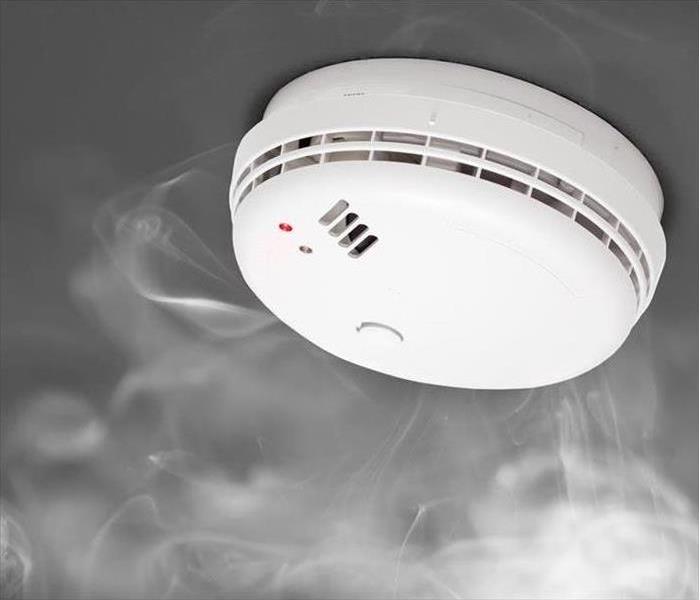 Keep your smoke alarm up to date in your Junction, UT home.
Keep your smoke alarm up to date in your Junction, UT home.
With all the time you spend in your home in Junction, UT, you want to know that you will be prepared and promptly alerted if a fire occurs. With each smoke alarm in your home replaced as necessary, you can feel confident that they will alert you in case of a fire.
1. Frequently Replace Batteries
Thanks to technological advances, alarms do not need to be replaced as frequently as they did in the past. However, just because the alarms themselves need to be replaced only every 10 years or so, this does not mean you can go years without replacing their batteries. A smoke detector should have its batteries replaced once a year.
2. Test Your Alarm
Even when you replace the batteries of your smoke alarm as needed, dysfunctions can still occur. Checking every alarm in your home once a month can help ensure that each alarm is functioning as it should. With most alarms, you can do this by pressing a button labeled ‘test.’ When testing your alarm, be prepared for the loud, consistent noise it will emit. If you don’t hear this response, it may be an indicator that your batteries need to be replaced.
3. Listen for Beeping
A smoke detector or alarm that needs new batteries will often spontaneously make a short beeping or chirping noise. Even if you have replaced your batteries within the year, the series of chirps may indicate that another change is required. If the alarm continues beeping after the batteries have been replaced, it might be time for a new alarm.
Keeping every smoke alarm in your home up-to-date is an important way to protect your home, yourself, and your loved ones. Although these measurements can alert you of a fire, destruction is not always preventable. If your home suffers from a fire, you may want to contact experts in fire damage restoration.
4 Tips About Smoke Detectors
6/3/2021 (Permalink)
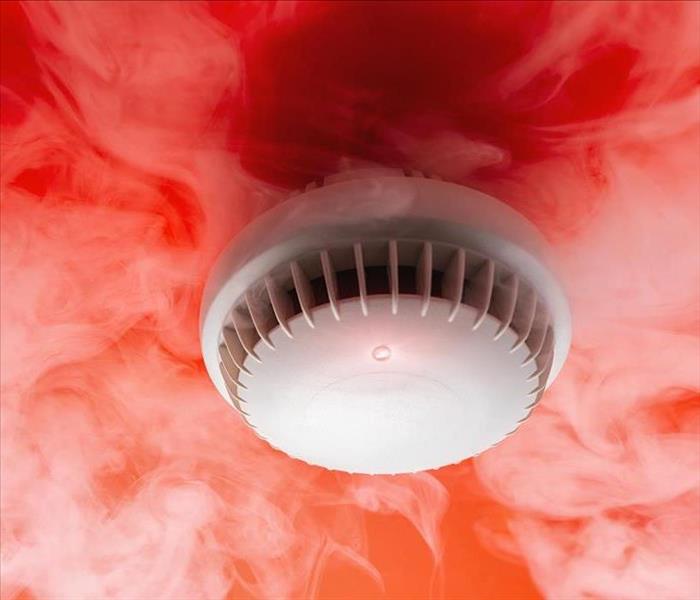 Smoke detectors are very important to keep you and your family safe.
Smoke detectors are very important to keep you and your family safe.
How often do you think about your smoke alarms, and do you have multiple alarms? A fire alarm is an essential piece of safety equipment, but many American households do not have an adequate number of devices in working order. If you are not aware of the current state of your alarms or are unsure of the number you should have for your home, contact the fire department or a fire restoration service in Salt Lake City, UT. However, to make the process easier, you can follow the four tips below.
4 Things to Know About Smoke Detectors
1. Number of Smoke Detectors Needed
Preventing extensive smoke damage is about early disaster intervention, meaning immediate response to a house fire. The best way to ensure the fastest response time is to have the appropriate number of smoke alarms for your home. The basic rule is to have at least one smoke alarm in every bedroom, outside sleeping areas, and on every floor of the home. For a two-story, three-bedroom home, that would mean a minimum of three alarms.
2. Average Lifespan of Detectors
A fire alarm does not have the same lifespan as your roof or some appliances. Most alarms have a maximum usable lifespan of between eight and 10 years. It is a good idea to put a date on detectors or set notifications on your phone or calendars as reminders.
3. Types of Detectors
Fire damage can occur during fast-moving fires or slow, smoldering fires. There are different devices to alert you to which type of fire you are dealing with. An ionization alarm reacts quickly to flaming or fast-moving blazes. A photoelectric alarm is quicker to sense smoldering or smoky fires. You should have each type in your home or look for combination detectors.
4. Emergency Escape Plan
Did you know you likely only have about three to four minutes to escape a house fire? Because of changes in furniture and construction, house fires can spread more quickly than ever before. Make sure you have a practiced fire escape plan.
A fire alarm can save your life. Make sure you have enough for your home to protect your family.
Tips for Choosing the Right Fire Extinguisher for Your Home
2/23/2021 (Permalink)
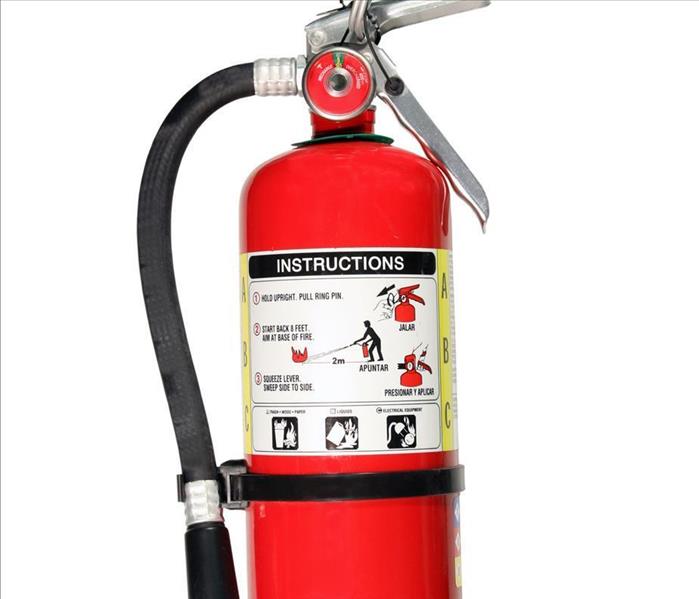 Choosing the right fire extinguisher for your home can help you avoid further fire damage.
Choosing the right fire extinguisher for your home can help you avoid further fire damage.
No homeowners like to think about a fire breaking out in their homes, but having a proper safety plan means preparing for the worst case scenario. Sometimes, the fire starts as a small, manageable flame that you can put out yourself, but in order to do this effectively, you have to have the right fire extinguisher within reach. Here are some tips for choosing the appropriate models for your home in Salt Lake City, UT.
3 Things to Consider When Choosing the Appropriate Fire Extinguisher
1. Effectiveness
A home fire can be caused by several issues:
- Ignited combustibles, such as wood or textiles
- Flammable substances, such as grease or gasoline
- Electrical problems
Some extinguishing agents work better on typical combustibles than others. You want to either make sure the label on your extinguisher indicates that it can cover all three categories of fire or purchase multiple extinguishers to place near high risk areas such as the kitchen.
2. Placement
There are several areas throughout your home where you need a fire extinguisher. Fire restoration experts recommend that you have an extinguisher in your garage and any other area where you work with electricity or flammable materials. You need one near your kitchen so that you can put out any fires that happen while you are cooking or baking, and you may consider adding an additional extinguisher within arm's length of the stove itself. Because of the risk of lint fires, you should also have an extinguisher in the laundry room. Since a home fire can break out anywhere, though, it's smart to have enough extinguishers that there is always one within a short distance.
3. Size
The size of the extinguisher depends on its potential use and the area it may have to cover. For large open spaces, a 10-pound extinguisher is appropriate. Most of the canisters throughout your home should be 5-pound models to cover smaller spaces. A 2-pound portable extinguisher is useful to have in your car.
Unless your home is very small, you likely need more than one fire extinguisher. Knowing what to buy and where to put them is a vital part of your fire preparedness plan.





 24/7 Emergency Service
24/7 Emergency Service











